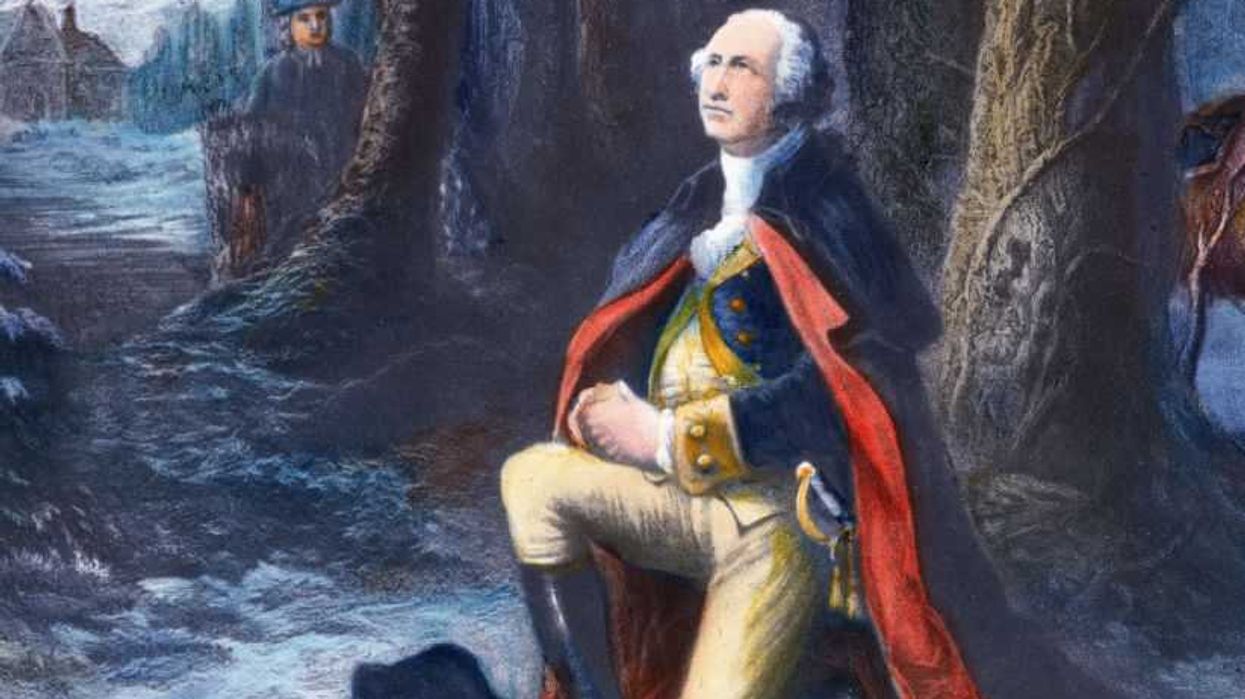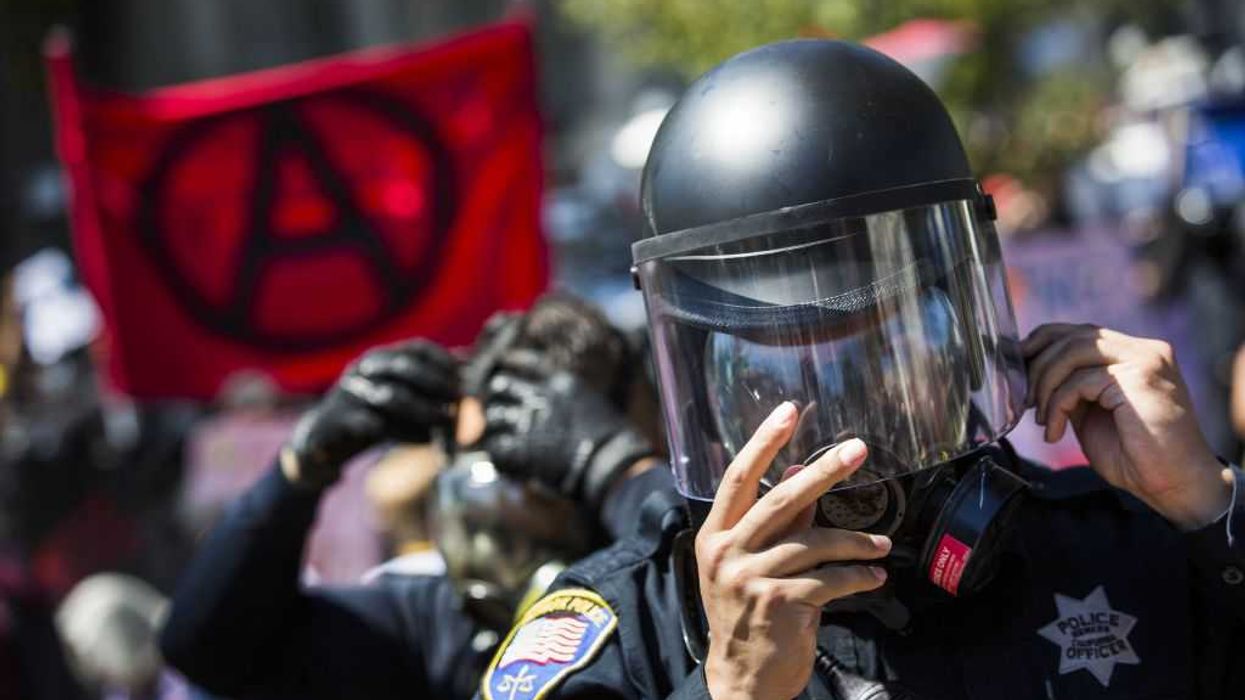Thomas Jefferson and John Adams both fulfilled their goal of living to see the 50th anniversary of the signing of the Declaration of Independence. Then, both died later that day — July 4, 1826. Adams was 90. Jefferson was 83.
Because of their failing health, Jefferson and Adams each declined many invitations to attend July 4th celebrations. Adams sent a letter to be read aloud at the 50th Independence Day celebration in his local town of Quincy, Massachusetts. He wrote that the Declaration is:
... a memorable epoch in the annals of the human race, destined in future history to form the brightest or the blackest page, according to the use or the abuse of those political institutions by which they shall, in time to come, be shaped by the human mind.
It's remarkable how well the Founders understood human nature and what could happen to the United States. It's the postmodern mindset that increasingly rules the U.S. now. It has infected our institutions and untethered us from the bedrock principles of the Declaration. In its place? Hypocritical and vitriolic partisan righteous indignation.
Less than a century after Adams' and Jefferson's deaths, the most serious attempt to undermine the Declaration of Independence and the Constitution came from America's 28th president — Woodrow Wilson. He wrote:
Some citizens of this country have never got beyond the Declaration of Independence.
As if that's a bad thing.
During Wilson's career as a college professor, he thought deeply and wrote extensively of his contempt for our founding documents. His issue with them formed the core beliefs of Progressivism that are still alive today.
In 1911, before he was elected President, Wilson said in a speech:
I do not find the problems of 1911 solved in the Declaration of Independence ... It is the object of Government to make those adjustments of life which will put every man in a position to claim his normal rights as a living human being.
See what he does there? He completely inverts the Declaration — he's saying, you don't have inherent rights until government puts you in a position to claim them. That's the heart of Progressivism.
In a later speech, Wilson said:
If you want to understand the real Declaration of Independence, do not repeat the preface.
Wilson did not think the equality, natural rights, and consent-of-the-governed parts of the Declaration defined the proper role of government. He preferred the Declaration's list of grievances because they addressed specific problems. That's what he thought government existed to do — solve problems for people. And since people's problems change over time, so should the Constitution and government to keep up with the times.
Wilson said:
No doubt we are meant to have liberty; but each generation must form its own conception of what liberty is.
We hear this sentiment echoed all the time today: follow your heart, find your truth, etc.
Another key to Wilson's Progressive theory of government was human evolution. He thought that because humans were now more enlightened, they could be trusted not to abuse government power. The Declaration's committee of five (Adams, Sherman, Franklin, Livingston and Jefferson) would've laughed Wilson out of the room.
It's hard to believe that less than 150 years after the signing of the Declaration, the U.S. president — Wilson — was saying this:
We are not bound to adhere to the doctrines held by the signers of the Declaration of Independence: we are as free as they were to make and unmake governments. We are not here to worship men or a document. Every Fourth of July should be a time for examining our standards, our purposes, for determining afresh what principles, what forms of power we think most likely to effect our safety and happiness. That and that alone is the obligation the Declaration lays upon us.
Wilson was so effective at imposing his philosophy on government that he forever diverted the U.S. presidency away from the Constitution. Progressives have kept Wilson's torch alive ever since.
Progressives are still hostile to the Declaration of Independence because of this idea of “historical contingency" which holds that truths change over time. Progressives think the “self-evident" truths of the Declaration are outdated and may no longer apply. And that means the Constitution based on those truths may no longer apply either. Wilson and Progressives especially don't like the whole separation of powers thing, because it hinders the fast action they want out of government. They want a justice warrior president who will bring swift change by fiat.
The current trend in attacking the Declaration and Constitution is to tear down the men who wrote them. In late 2015, students at the University of Missouri and the College of William & Mary, placed notes all over the statues of Thomas Jefferson on their respective campuses. The handwritten notes labeled Jefferson things like, “racist," “rapist," “pedophile" (not sure what that one's supposed to mean), “How dare you glorify him," “I wouldn't be here if it was up to him," and “Black Lives Matter."
That is the handiwork of students who are blinded by self-righteous victimhood and can't see the value and merit that the Declaration still holds for us today. After these incidents, Annette Gordon-Reed offered a reasoned defense of Jefferson. Reed is a respected history professor at Harvard Law School, who also happens to be a black woman. She wrote:
I understand why some people think his statues should be removed, but not all controversial figures of the past are created equal. I think Jefferson's contributions to the history of the United States outweigh the problems people have with aspects of his life. He is just too much a part of the American story to pretend that he was not there ... The best of his ideals continue to influence and move people. The statues should be a stimulus for considering all these matters at William & Mary and the University of Missouri.
At the opposite end of the spectrum from Woodrow Wilson's disdain for the Declaration of Independence, Abraham Lincoln loved it. If there is one overarching theme in Lincoln's speeches, it is the Declaration. Lincoln pointed the nation back to the Declaration as a mission statement, which ended slavery and preserved the Union.
Unlike Wilson, who recommended leaving out the Preamble, Lincoln considered it the most vital part. To Lincoln, the self-evident truths were universal, timeless, and more important than the list of grievances. Lincoln wrote that these truths were:
... applicable to all men and all times ... that today, and in all coming days, it shall be a rebuke and a stumbling block to the very harbingers of reappearing tyranny and oppression.
In a speech Lincoln gave in 1861, shortly after he was first elected president, he said:
I have never had a feeling politically that did not spring from the sentiments embodied in the Declaration of Independence… I have often inquired of myself what great principle or idea it was that kept this Confederacy so long together. It was not the mere matter of the separation of the Colonies from the mother-land, but that sentiment in the Declaration which gave liberty, not alone to the people of this country, but, I hope, to the world, for all future time.
Lincoln went on to say that he would rather be assassinated than see the nation forfeit the principles of the Declaration. His Gettysburg Address is a brilliant, concise renewal of the Declaration:
... that this nation, under God, shall have a new birth of freedom — and that government of the people, by the people, for the people, shall not perish from the earth.
We cannot assume that this radical idea of freedom will always be embraced by Americans. It has found hostility on our shores every step of the way. The Declaration's principles must be continually defended. Because while humans do have certain unalienable rights that are endowed by our Creator, there is darkness in the world, and for some strange reason humans, while valuing freedom, also seem to have a natural bent toward tyranny. That's why we must understand and discuss the Declaration. It's not alarmist. It's not a quaint history lesson. It's a reality, right now, that the fundamental principles of the Declaration are under attack. The Founders would have undoubtedly shuddered at most of the rhetoric from last week's Democratic presidential debates. Left to its own mob devices, even America would turn its back on freedom.
Shortly before his death in 1826, 90-year-old John Adams was asked to recommend a toast that could be given in his honor on July 4th. Adams didn't hesitate. He suggested, “Independence Forever." The small group of visitors silently glanced at each other for a moment, before someone asked Adams if he'd like to add anything else. Adams shifted forward in his chair, leaned on his cane, stared intently at the men, and replied, “Not a word."

 Harold M. Lambert / Contributor | Getty Images
Harold M. Lambert / Contributor | Getty Images
 Adam Gray / Stringer | Getty Images
Adam Gray / Stringer | Getty Images Anadolu / Contributor | Getty Images
Anadolu / Contributor | Getty Images Brandon Bell / Staff | Getty Images
Brandon Bell / Staff | Getty Images